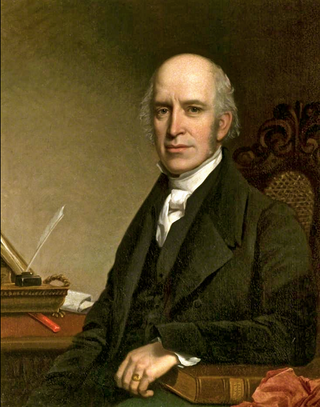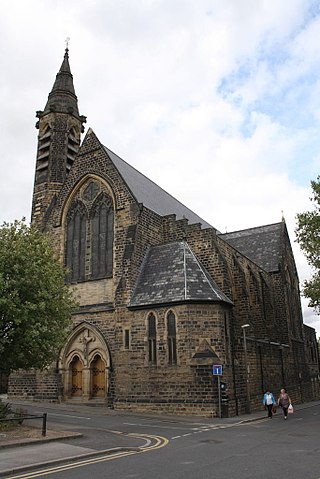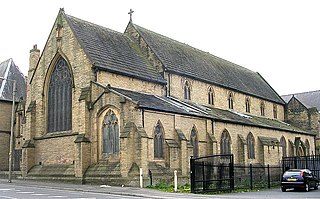
St Stephen's House is a theological college in Oxford, England affiliated with the Church of England. From 2003 to 2023 it was a permanent private hall of the University of Oxford.

The Cathedral Church of St. Barnabas is a cathedral of the Roman Catholic Church in the city of Nottingham in Nottinghamshire, England. It is the mother church of the Diocese of Nottingham and seat of the Bishop of Nottingham. The cathedral is a grade-II* listed building.

Ushaw College is a former Catholic seminary near the village of Ushaw Moor, County Durham, England, which is now a heritage and cultural tourist attraction. The college is known for its Georgian and Victorian Gothic architecture and listed nineteenth-century chapels. The college now hosts a programme of art exhibitions, music and theatre events, alongside tearooms and a café.

St Mary's College in New Oscott, Birmingham, often called Oscott College, is the Roman Catholic seminary of the Archdiocese of Birmingham in England and one of the three seminaries of the Catholic Church in England and Wales.
Robert William Willson was an English Roman Catholic bishop, the first Bishop of Hobart, and an advocate for the convicts in Australia.

Hethe is a village and civil parish about 4.5 miles (7.2 km) north of Bicester in Oxfordshire, England.

Edward James Willson was an English architect, antiquary, architectural writer, and mayor of Lincoln in 1851–2.

English Martyrs Church or its full name The Church of St Thomas of Canterbury and the English Martyrs is a Roman Catholic Parish church in Preston, Lancashire. It was designed by Edward Welby Pugin and is under the administration of the Diocese of Lancaster. It is near to Preston city centre and stands on the corner of the A6, between Aqueduct Street and St George's Road. Since 2017, it has been in the care of priests from the Institute of Christ the King Sovereign Priest.

St John's Church is a Roman Catholic Church in Standishgate, Wigan, Greater Manchester. It is within 200 feet of another Catholic church, St Mary's. Construction on both churches, was done in a spirit of competition, so they both were finished in the same year, 1819. The competition was because St John's Church was originally served by the Society of Jesus, whereas St Mary's was always served by priests from the diocese. However, the Jesuits gave the church to the Archdiocese of Liverpool in 1933. It is a Grade II* listed building and the sanctuary inside the church was designed by Joseph John Scoles.

St James' Church is a large English Gothic Catholic church in George Street, Marylebone, London. Although currently situated in George Street, the church maintains its connection with Spanish Place, the road opposite the current church, because of its historic connection with the Spanish Embassy. It is a Grade II* listed building.

The former Salvation Army Hall in Godalming, Surrey, England, now an office building known as Aurum House, has been used by three religious groups since its construction c. 1830. The ancient town in the English county of Surrey has a long and diverse history of Protestant Nonconformity, and three Nonconformst denominations are represented: at first it served Congregationalists, but when they built a larger chapel in the town it passed to the Methodist Church. In the 20th century it was occupied by The Salvation Army, but it closed in 2012 and was redeveloped for commercial use. The building has been listed at Grade II for its architectural and historical importance.

Holy Rood Church is a Roman Catholic Parish Church in Barnsley, South Yorkshire, England. It was opened in 1905. It is situated on the corner of Castlereagh Street and George Street, next to West Way in the town centre. It was designed by Edward Simpson and is a Grade II listed building.

St Patrick's Church is a Roman Catholic church in Bradford, West Yorkshire, England. It was built from 1852 to 1853 and designed by George Goldie. It is situated on the corner of Sedgfield Terrace and Westgate in the city centre. To the south and west of the church is Rebecca Street and Vaughan Street. The church is the oldest Roman Catholic church still in use in the city and is a Grade II listed building.

St Joseph's Church is a Roman Catholic Parish church in Stockport, Greater Manchester, England. It was built from 1861 to 1862 and designed by Matthew Ellison Hadfield. It is situated on St Petersgate, south west of the High Street. It is the only church in England administered by the Priests of the Sacred Heart and is a Grade II listed building.

Our Lady of Mount Carmel and St Patrick Church or St Patrick's Church is a Roman Catholic Parish church in Oldham, Greater Manchester, England. It was founded in 1858 and was built in 1870. It is situated on the corner of John Street and Union Street West, north of Oldham Sixth Form College in the centre of the town. It is a Gothic Revival church and is a Grade II listed building.
Gerard Thomas Goalen was a British architect who specialised in church architecture and was influenced by continental models and the Liturgical Movement. He was one of the most important architects of the Catholic Modernist movement in the United Kingdom during the 20th century.

St Peter's Church is a Roman Catholic parish church in Scarborough, North Yorkshire, England. It was built from 1856 to 1858 and designed by George Goldie in the Gothic Revival style. It is located on the corner of Castle Road and Tollergate in the town centre. It is a Grade II listed building.

St Alban and St Stephen's Church or Ss Alban and Stephen Church is a Roman Catholic parish church in St Albans, Hertfordshire, England. Although it was built from 1903 to 1905, it was the third attempt to build a permanent local Catholic church in St Albans. It was designed by John Kelly of Kelly & Birchall in the Italian style. It is located on Beaconsfield Road next to the St Albans City railway station in the city centre.

St Mary's Church or St Mary Immaculate Church is a Roman Catholic parish church in Falmouth, Cornwall, England, United Kingdom. It was built from 1868 to 1869 and designed by Joseph Hansom. The architecture of the church, according to Historic England is a blend of "Gothic and Burgundian Romanesque styles". It is located on the corner of Kimberley Place and Killigrew Street. It was extended by Hansom's son Joseph Stanislaus Hansom in 1881 and it is a Grade II listed building.

St Peter's Church or St Peter Apostle Church is a Roman Catholic parish church in Leamington Spa, Warwickshire, England. It was built in 1864 and designed by Henry Clutton in the Gothic Revival style. It is located on Dormer Place, next to the Royal Pump Room Gardens. It is a Grade II listed building.




















